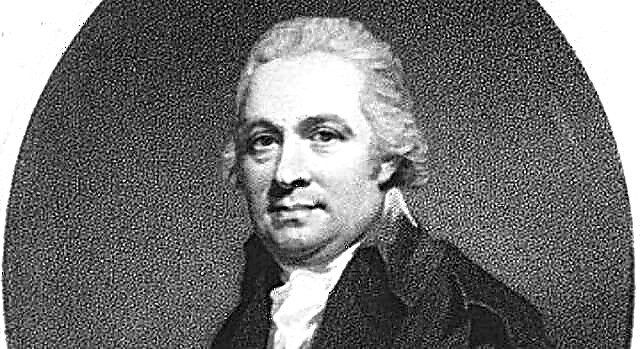All people see a wide variety of bridges. Not everyone thinks that the bridge is a much older invention than the wheel. During the first millennia of human history, people did not need to transport anything heavy. Firewood can be carried by hand. A cave or a hut was suitable for a dwelling. The notorious mammoth, killed for food, did not need to be dragged anywhere - they ate as long as possible, on the spot, or divided the carcass into pieces suitable for carrying. Crossing rivers or gorges, first on a successfully fallen, and then on a specially dumped trunk, often had to, and sometimes life depended on the possibility of crossing.
In some mountainous regions of South America and Asia, there are tribes that still do not know the wheel. But bridges are well known to such tribes, and often they are not at all a log that fell through a meter-long stream, but complex structures of flexible fibers and wood, assembled with a minimum of tools, but working for centuries.
The massive construction of bridges was begun by road-crazy Romans. The principles of bridge building developed by them existed for hundreds of years, before the appearance of steel, concrete and other modern materials. But even taking into account the latest advances in science, the construction of bridges still remains a difficult engineering task.
1. Bridges, despite all their variety, are of only three types by type of construction: girder, cable-stayed and arched. The girder bridge is the simplest one, the same log thrown over the stream. The suspension bridge rests on cables; it can be both plant fibers and powerful steel ropes. The arched bridge is the most difficult to build, but at the same time it is the most durable. The weight of the bridge over the arches is distributed to the supports. Of course, in modern bridge construction there are also combinations of these types. There are also floating, or pontoon bridges, but these are only temporary structures, and they lie on the water, and do not pass over it. It is also possible to distinguish bridges (passing over water) from viaducts (crossing lowlands and ravines) and overpasses (passing over roads), but from an engineering point of view, the difference is insignificant.
2. Despite the fact that any bridge, by definition, is an artificial structure, on Earth, apart from small gullies, there are real natural giant bridges. Recently, images of the Fairy Bridge in China have been widely disseminated. The views are really impressive - the river passes under an arch with a height of more than 70 meters, and the length of the bridge is close to 140 meters. However, Fairy Bridge is far from the only, and not the largest, such formation. In Peru, on the eastern slope of the Andes, back in 1961, an arch with a height of 183 meters was discovered over the Kutibiren River. The resulting bridge is over 350 meters long. Moreover, this “bridge” is about 300 meters wide, so tunnel lovers can argue what exactly this natural structure should be considered.
3. The most famous bridge of antiquity is probably the 400-meter bridge over the Rhine, built in 55 BC. e. Thanks to the modesty of Julius Caesar, and diligently describing it in the book "Gallic War" (no other evidence), we have an idea of this miracle of engineering. The bridge was built from vertical and inclined oak piles with a height of 7 - 8 meters (the depth of the Rhine at the bridge construction site is 6 meters). From above, the piles were fastened with transverse beams, on which a deck of logs was armed. Everything about everything took 10 days. On the way back to Rome Caesar ordered to dismantle the bridge. Something wrong was suspected already in the Middle Ages. True, Andrea Palladio and Vincenzo Scamozzi only slightly corrected the great Caesar, “correcting” the construction method and the appearance of the bridge. Napoleon Bonaparte, with his characteristic frankness, declared that all talk about the plank covering of the bridge was nonsense, and the legionnaires were walking on unshorn logs. August von Zoghausen, a Prussian military engineer, went further. He calculated that if you hammer a pile with a woman (a large hammer lifted on ropes) from two boats, and then additionally reinforce it with backfill, the project is quite feasible. It is clear that for the preparation of the piles, it was necessary to cut down a small oak forest, and to dig a stone quarry for backfilling. Already in the twentieth century, the historian Nikolai Ershovich calculated that with the double-shift work of the pile driver, it would take 40 days of continuous work only to drive piles and Caesar's legionnaires. So, most likely, the bridge over the Rhine existed only in the rich imagination of Caesar.
4. The founder of scientific bridge building is the Russian engineer and scientist Dmitry Zhuravsky (1821 - 1891). It was he who began to apply scientific calculations and accurate scale modeling in bridge construction. Zhuravsky worked as an engineer on the construction of the then longest railway in the world, St. Petersburg - Moscow. The glory of American bridge builders thundered in the world. The luminary was William Howe. He invented a wooden truss held together by iron rods. However, this invention was a sudden inspiration. Gau and his company built many bridges in the United States, but they built them, as the popular science gracefully puts it, empirically - at random. Similarly, empirically, these bridges collapsed. Zhuravsky, on the other hand, began to calculate the strength of the arched structures mathematically, reducing everything to an elegant set of formulas. Almost all railway bridges in Russia in the 19th century were built either under the leadership of Zhuravsky, or using his calculations. The formulas in general turned out to be universal - they also fit when calculating the strength of the spire of the Cathedral of the Peter and Paul Fortress. In the future, Dmitry Ivanovich built canals, reconstructed seaports, for 10 years headed the department of railways, significantly expanding the throughput of highways.
5. The longest bridge in the world - Danyang-Kunshan viaduct. Less than 10 km of its total length of 165 km passes over the water, but this does not make the section of the high-speed highway between Nanjing and Shanghai easier to build. However, it took Chinese workers and engineers only $ 10 billion and about 40 months to build this monster in the world of bridges. The rapid construction of the viaduct was clearly also due to political necessity. Since 2007, the longest bridge in the world has been the Zhanghua - Kaohsiung Viaduct. This record holder was built in Taiwan, which is also called the Republic of China and considers the current authorities in Beijing to be usurpers. Places 3 to 5 are occupied by various Chinese bridges and viaducts from 114 to 55 kilometers in length. Only in the bottom half of the top ten are bridges in Thailand and the United States. The youngest of America's longest bridges, the 38 kilometers long Pontchartrain Lake Bridge, was commissioned in 1979.

6. The famous Brooklyn Bridge in New York actually took the lives of not only 27 workers, but also two of its main builders: John Roebling and his son Washington. John Roebling, by the time the construction of the Brooklyn Bridge began, had already built a cable-stayed crossing over Niagara just below the famous waterfall. In addition, he owned a large steel wire rope company. Roebling Sr. created a project for the bridge and in 1870 began its construction. Roebling gave the command to begin the construction of the bridge, not knowing that he was doomed. During the last measurements, a ferry crashed into the boat carrying the engineer. The engineer injured several toes. He never recovered from this injury, although his leg was amputated. After the death of his father, Washington Roebling became the chief engineer. He saw the Brooklyn Bridge built, but Roebling Jr.'s health was compromised. While dealing with an accident in a caisson - a chamber from which water is forced out by high air pressure for work at depth - he survived decompression sickness and was paralyzed. He continued to supervise construction, sitting in a wheelchair and communicating with builders through his wife, Anne Warren. However, Washington Roebling had such a will to live that he lived paralyzed until 1926.
7. The longest bridge in Russia is the “freshest” one - the Crimean Bridge. Its automobile part was put into operation in 2018, and the railway one in 2019. The length of the railway part is 18,018 meters, the automobile part - 16,857 meters. The division into parts, of course, conditionally - the length of the railway tracks and the length of the road were measured. The second and third places in the ranking of the longest bridges in Russia are occupied by overpasses of the Western High-Speed Diameter in St. Petersburg. The length of the South Overpass is 9,378 meters, the North Overpass is 600 meters shorter.
8. Trinity Bridge in St. Petersburg at the beginning of the twentieth century was called a French or Parisian beauty. In the course of the political rapprochement between Russia and France, the already considerable reverence for everything French reached sky-high heights. Only French firms and engineers took part in the competition for the construction of the Trinity Bridge. The winner was Gustave Eiffel, the one who built the tower in Paris. However, due to some mysterious movements of the Russian soul, the Batignolles was commissioned to build the bridge. The French did not disappoint, having built another decoration of the city. Trinity Bridge is decorated with original obelisks on both banks and lamps that crown each pillar of the bridge. And from the Troitsky Bridge you can see seven other St. Petersburg bridges at once. In 2001 - 2003, the bridge was completely reconstructed with the replacement of worn out reinforced concrete parts, the roadbed, tram tracks, a swing mechanism and the installation of lighting. All decorative and architectural elements have been restored. Multilevel interchanges have appeared at the ramps from the bridge.
9. Part of the visual image that appears in the head of a person at the word "London" is likely to be a bridge - such are the established cliches. However, there are not many bridges in the British capital. There are only about 30 of them. For comparison: the compilers of the Guinness Book of Records believe that there are about 2,500 bridges in Hamburg, Germany. In Amsterdam, there are up to 1,200 bridges, in Venice, which stands almost exclusively on the water, there are 400. St. Petersburg can fit into the top three cities with the largest number of bridges, if bridges in satellite cities are counted, then there are more than 400 of them. there are 342 of them in the capital, including 13 adjustable ones.
10. The oldest of the bridges across the Moskva River in the Russian capital, as for similar structures, is not so old. It was built by the architect Roman Klein in 1912 to commemorate the centenary of the Patriotic War. Since then, the bridge has been seriously rebuilt twice. The bearing pillars were replaced, the bridge was widened, its height was increased - for a bridge located a couple of kilometers from the Kremlin, not only aesthetics are important, but also carrying capacity. The appearance of the bridge is fully preserved along with its business cards - side porticos and obelisks.

11. The beginning of the XXI century was the golden age of the Russian bridge building. Without much fanfare, without announcing national programs or nationwide construction projects, dozens of bridges of great length and particular complexity of construction have been built in the country. Suffice it to say that 9 out of 10 and 17 out of 20 of the longest Russian bridges were built in 2000-2020. Among the "oldies" in the top ten was the Amur bridge in Khabarovsk (3,891 meters, 8th place), which can be seen on the five thousandth bill. Saratov Bridge (2804, 11) and Metro Bridge in Novosibirsk (2 145, 18) are among the twenty longest Russian bridges.
12. The fate of the very first St. Petersburg bridge is worthy of perpetuation in the novel. It was built by Alexander Menshikov in 1727. After the death of Peter I, who did not approve of the construction of bridges in St. Petersburg, the favorite became omnipotent and appropriated the rank of admiral. And the Admiralty was located from the Menshikov estate on Vasilievsky Island right across the Neva - it is convenient to get to the service without changing into boats and back. So they built a floating bridge, which was pushed apart for the passage of ships and dismantled for the winter. When Menshikov was overthrown, he ordered to dismantle the bridge. They reached it on the island, and the inhabitants of St. Petersburg pulled the bridge with phenomenal speed. Isaac's (St. Isaac's Church stood near the bridge near the Admiralty) bridge was renewed in 1732, but it was immediately destroyed by an autumn flood. In 1733, the bridge was made more powerful, and it stood until 1916. True, in 1850 it was moved to the Spit of Vasilievsky Island and the bridge became the Palace Bridge. Perhaps, as a monument of antiquity, the bridge would have survived to this day, but someone came up with an idea in the era of steamships to arrange a kerosene warehouse on it. The result was predictable: in the summer of 1916, sparks from labor ignited the structures and the flame quickly reached kerosene. The remains of the bridge burned down for several days. But it was also the world's first bridge with electric lighting - in 1879, several lamps designed by P.N. Yablochkov were installed on it.
13. As you know, you have to pay for any convenience. Bridges often charge human lives for their convenience. Sometimes they are destroyed due to human thoughtlessness or negligence, sometimes for natural reasons, but more often the bridge is destroyed by a whole complex of factors. Cases in French Angers (1850) or in St. Petersburg (1905), when bridges collapsed due to the fact that marching troops fell into resonance with vibrations of the bridge, can be considered ideal - the destruction has one obvious reason. Clark Eldridge and Leon Moiseeff, when designing a bridge at Tacoma Narrows in the United States, also ignored resonance, in this case wind gusts were in resonance. The bridge collapsed in front of several camera owners who captured the exciting footage. But the bridge over the Firth of Tay in Scotland collapsed in 1879 not only due to strong winds and waves, but also due to the fact that its supports were not designed for a complex load - a train was also launched across the bridge. The waters of the Tei estuary became a grave for 75 people. The "Silver Bridge" in the United States between West Virginia and Ohio, built in 1927, is simply tired in 40 years. It was counted on the movement of passenger cars weighing 600 - 800 kg and corresponding trucks. And in the 1950s, the era of automotive gigantism began, and cars weighing the size of a pre-war truck began to ride on the "Silver Bridge". One day, far from perfect for 46 people, the bridge fell into the waters of Ohio. Unfortunately, bridges will continue to collapse - states are now extremely reluctant to invest in infrastructure, and private businesses need quick profits. You can't get it from bridges.
14. In 1850 in St. Petersburg the construction of a metal bridge over the Neva with a length of almost 300 meters was completed. At first it was named Blagoveshchensky after the name of the church that was nearby. Then, after the death of Nicholas I, it was renamed Nikolaevsky. The bridge was at that time the longest in Europe. They immediately began to compose stories and legends about him. The emperor, the creator of the bridge, Stanislav Kerbedzu, allegedly assigned another military rank after the installation of each span. Kerbedz began to build a bridge in the rank of major. If the legend was true, after the fifth flight, he would become a field marshal general, and then Nikolai would have to invent three more new titles according to the number of flights remaining. Men on walks with ladies vied with each other about the charm of the bridge - for a long time it was the only one on which smoking was allowed - the rest of the bridges were made of wood. Shortly before his death, Nicholas I, passing over the bridge, met a modest funeral procession. They buried a soldier who had served the prescribed 25 years. The emperor got out of the carriage and walked the soldier on his last journey. The retinue was forced to do the same.Finally, on October 25, 1917, a shot from the 6-inch gun of the cruiser Aurora, which was stationed near the Nikolaevsky bridge, gave the signal for the beginning of the October coup, later called the Great October Socialist Revolution.
15. From 1937 to 1938, 14 bridges were built or reconstructed in Moscow. Among them are the only suspended Crimean Bridge (Moscow) in the capital, which is so fond of those who want to commit suicide, and the Bolshoi Kamenny Bridge - the famous panorama of the Kremlin opens from it. The Bolshoi Moskvoretsky Bridge, which connects Vasilievsky Spusk with Bolshaya Ordynka, was also reconstructed. There was a crossing here in the 16th century, and the first bridge was built in 1789. In recent times, this bridge has become known for the fact that it was on it that a light aircraft of the German Matthias Rust landed, which in 1987 overcame the entire air defense system of the USSR. Then the oldest metro bridge in Russia, Smolensky, was built. The first passengers of the 150-meter long single-span arched bridge especially noted the contrast between the dark walls of the metro tunnel and the superb views of the Moskva River and its banks that suddenly appeared in sight.








